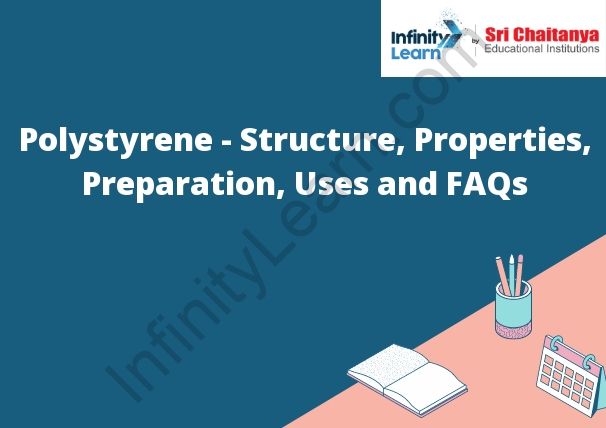Table of Contents
What is Polystyrene?
Polystyrene – Structure:
Polystyrene is a type of plastic made from the monomer styrene. It is often used in food packaging and is also a common component of Styrofoam insulation. Polystyrene can be recycled, but it is not biodegradable.

Structure of Polystyrene
- Polystyrene is a synthetic polymer made from the monomer styrene. It is an amorphous thermoplastic that is soluble in organic solvents. Polystyrene is a white, odorless, and tasteless solid. It is non-toxic and insoluble in water.
- Polystyrene is a very versatile polymer. It can be used to make both rigid and flexible products. It is often used to make packaging materials, such as cups, plates, and food containers. It is also used to make products such as toys and insulation.
Properties of Polystyrene
Polystyrene is a thermoset plastic made from the monomer styrene. It is a colorless, hard, and brittle material. It is an insulator and has a low thermal conductivity. It is also a poor conductor of electricity. Polystyrene is non-biodegradable and is resistant to most solvents.
Preparation of Polystyrene from Benzene
- Benzene is first purified by distillation. It is then mixed with styrene monomer in the presence of a catalyst.
- mixture is then heated to cause the monomers to polymerize.
- The polymerized product is then collected and purified.
Use of Polystyrene Foam
- Polystyrene foam is a light weight and inexpensive plastic that is used to make cups, plates, and other food service items.
- It is also used as insulation in buildings and for packaging materials.
- Polystyrene foam can be recycled, but most often it is not.
- Polystyrene foam is a versatile, lightweight product that is used in a variety of ways. It is often used as a packing material to protect fragile items during shipping. Polystyrene foam is also used as insulation in buildings and as a filler in products such as pillows and mattresses.
- One of the biggest advantages of polystyrene foam is its ability to protect objects from damage. The foam is very soft and can conform to the shape of the object it is protecting. The foam is also very lightweight, which makes it easy to transport.
- Polystyrene foam is also a good insulator. It can be used to keep buildings warm in the winter and cool in the summer. The foam can also be used to insulate pipes and electrical wiring.
- Polystyrene foam is also a good filler. It can be used to fill gaps in products such as pillows and mattresses. This helps to make the products more comfortable to use.
Food Packaging and the Polystyrene Safety Issue
- Polystyrene is a synthetic polymer made from the monomer styrene. It is a white, odorless, and inert plastic that is lightweight and heat resistant. Polystyrene is used in a variety of applications, including food packaging.
- The safety of polystyrene for food packaging has been questioned for a number of reasons. Some people believe that polystyrene can leach styrene into food, which can be harmful. However, there is no evidence that styrene poses a health hazard at the levels that would be found in food packaging. In fact, the Food and Drug Administration has determined that polystyrene is safe for food contact.
- Despite the safety of polystyrene, some people choose to avoid it due to concerns about its potential health effects. If you are concerned about the safety of polystyrene, there are a number of alternative food packaging materials available, including paper, cardboard, and glass.








